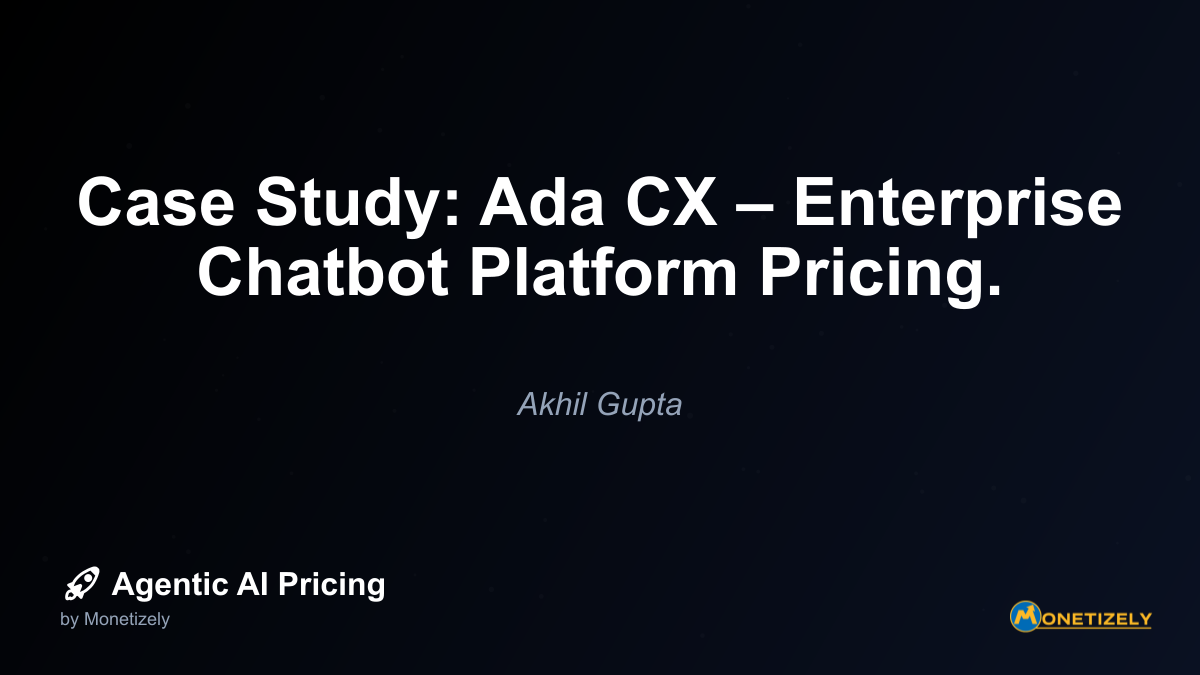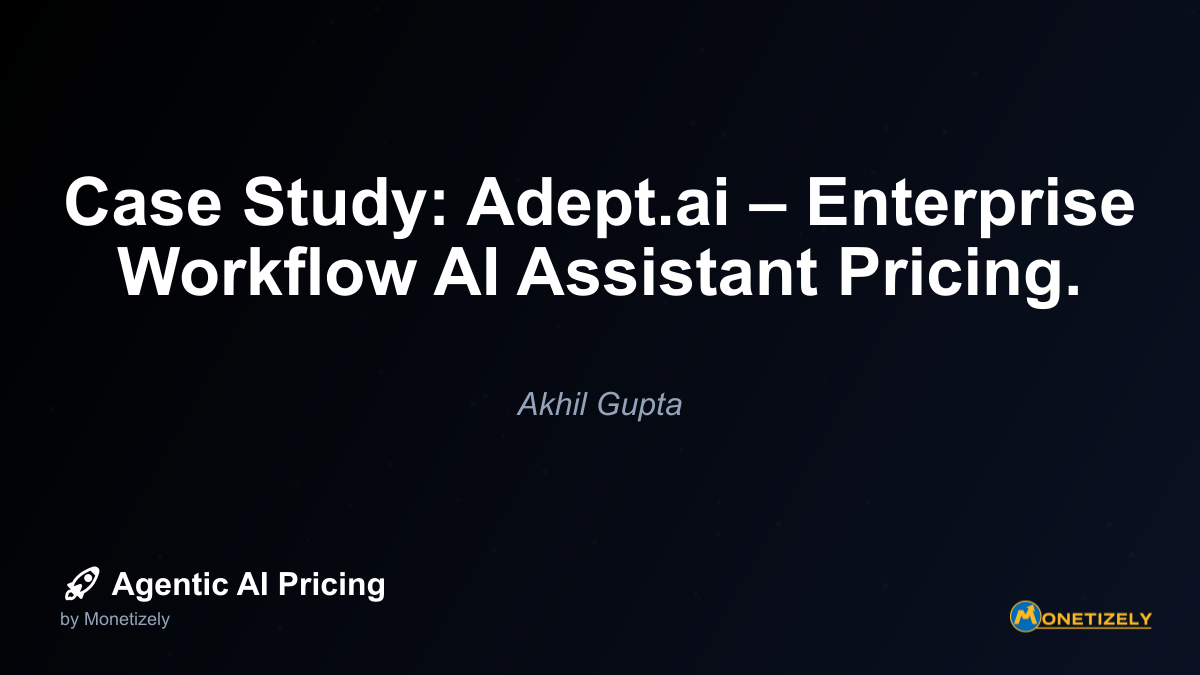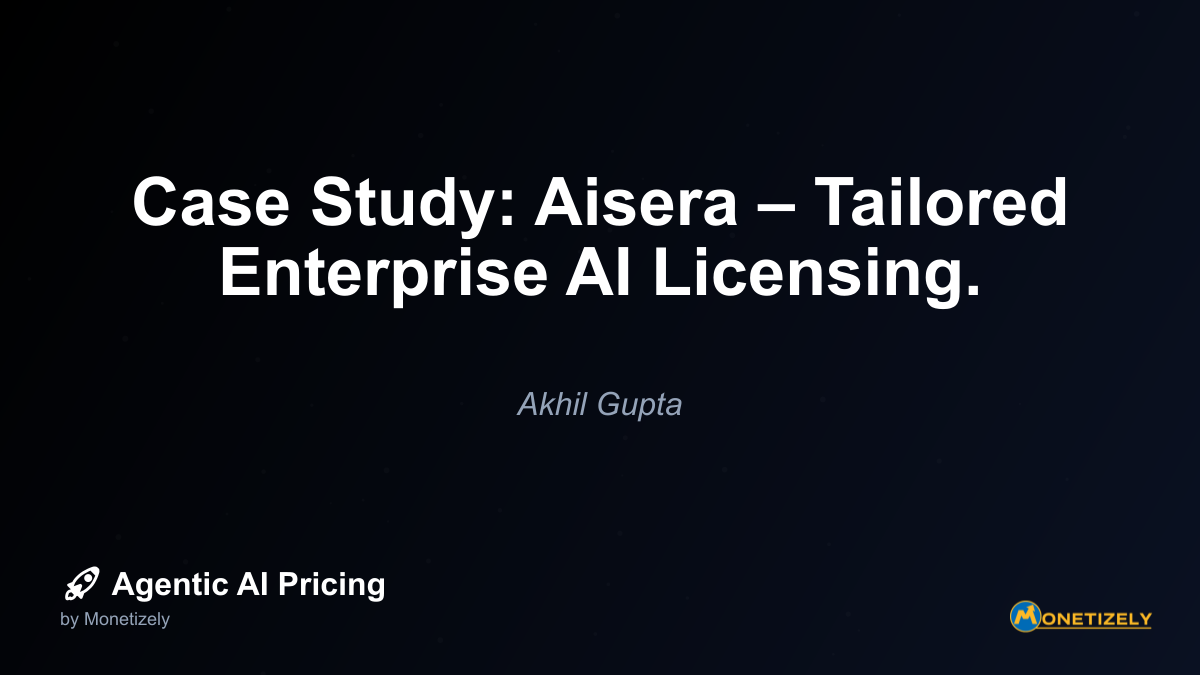· Ajit Ghuman · Case Studies · 4 min read
Case Study: Automation Anywhere – Flexible Bot Pricing Options.
AI and SaaS Pricing Masterclass
Learn the art of strategic pricing directly from industry experts. Our comprehensive course provides frameworks and methodologies for optimizing your pricing strategy in the evolving AI landscape. Earn a professional certification that can be imported directly to your LinkedIn profile.

Parallels with AI Agent Pricing Models
The evolution of Automation Anywhere’s pricing strategy offers valuable insights for the broader agentic AI market. Many of the same considerations apply when pricing AI agents, which similarly perform automated tasks but with greater autonomy and intelligence.
Common Pricing Approaches for Agentic AI
As discussed in our comprehensive guide on AI agent marketplace pricing, organizations deploying agentic AI solutions face similar decisions between:
Subscription-based models where users pay a recurring fee for access to AI agents regardless of usage volume
Usage-based pricing where costs scale with actual agent utilization (measured in tokens, API calls, or completed tasks)
Value-based approaches that tie pricing to business outcomes achieved through the AI agents
Hybrid frameworks combining elements of multiple models to balance predictability with flexibility
The key difference is that while RPA bots typically perform defined, repetitive tasks, agentic AI systems often handle more complex, variable work with greater autonomy. This can make measuring “usage” more challenging but also potentially more valuable.
Future Directions in Automation and AI Agent Pricing
As both RPA and agentic AI technologies continue to evolve, we can anticipate further innovations in pricing models. Several trends are likely to shape this evolution:
Outcome-Based Pricing
The next frontier may be true outcome-based pricing, where customers pay based on the business results achieved rather than just usage. For example:
- An accounts payable bot might be priced per dollar of early payment discounts captured
- A customer service AI agent could be priced per successfully resolved inquiry
- A document processing system might charge based on compliance errors prevented
This approach aligns vendor and customer incentives even more closely but requires sophisticated tracking of outcomes and attribution.
Marketplace Models
As automation and AI capabilities become more modular and specialized, marketplace models are emerging where:
- Developers create specialized bots or AI agents for specific functions
- Customers purchase or subscribe to these specialized capabilities
- Pricing varies based on the complexity and value of each automation
Automation Anywhere has already moved in this direction with their Bot Store, and we can expect this trend to accelerate across the industry.
AI-Optimized Pricing
Ironically, AI itself may soon determine the optimal pricing for automation and AI services. Machine learning algorithms could analyze:
- Usage patterns across customers
- Value delivered by different automations
- Price sensitivity in various market segments
- Competitive offerings and market conditions
This could lead to dynamic, personalized pricing that maximizes value for both vendors and customers.
Implementation Best Practices
For organizations looking to implement or optimize flexible pricing models for automation or AI capabilities, several best practices emerge from Automation Anywhere’s experience:
Start with Clear Objectives
Before selecting a pricing model, organizations should define their objectives:
- Is the primary goal market expansion?
- Is predictable revenue the highest priority?
- Is customer satisfaction and retention most important?
- Is maximizing revenue from existing customers the focus?
Different pricing models serve different strategic objectives, and clarity here is essential.
Invest in Measurement Infrastructure
Usage-based models require robust measurement capabilities:
- Real-time monitoring of consumption metrics
- Clear, transparent reporting for customers
- Alerting systems for unusual patterns or potential overages
- Historical analysis tools for optimization
Without these capabilities, usage-based models can create friction and disputes rather than flexibility.
Provide Tools for Customer Success
Customers need help managing their costs in flexible models:
- Usage dashboards with trending analysis
- Forecasting tools to predict future costs
- Optimization recommendations to improve efficiency
- Budget management capabilities with alerts
These tools help customers feel in control of their spending, increasing satisfaction and retention.
Develop Clear Migration Paths
As customer needs evolve, they should have clear paths to transition between pricing models:
- From usage to subscription as usage stabilizes
- From subscription to usage as needs become more variable
- To hybrid models as sophistication increases
- Between different tiers as scale changes
These pathways should be well-documented and supported by account teams.
Conclusion: The Strategic Importance of Pricing Flexibility
Automation Anywhere’s evolution from purely subscription-based to flexible pricing options illustrates a broader trend in technology monetization. As automation and AI capabilities become more central to business operations, the way these technologies are priced becomes a strategic consideration rather than merely an operational detail.
The most successful vendors will be those who recognize that different customers have different needs, priorities, and usage patterns. By offering flexibility in how their technologies are consumed and paid for, these vendors create win-win scenarios where customers can optimize their investments while vendors build stronger, more resilient customer relationships.
For organizations implementing automation and AI technologies, the lesson is clear: pricing model selection should be considered a strategic decision that impacts not just costs but also how quickly and effectively these technologies can be deployed and scaled. The right model can accelerate adoption and value creation, while the wrong model can create unnecessary friction and limit returns.
As the automation and AI markets continue to mature, we can expect further innovation in pricing approaches. The vendors and customers who collaborate most effectively on aligning costs with value will be the ones who extract the greatest benefits from these transformative technologies.
Co-Founder & CEO
Ajit is the author of Price To Scale, a top book on SaaS Pricing and is the Founder of Monetizely. Ajit has led and worked in pricing and product marketing at firms like Twilio, Narvar and Medallia. His work has been featured in Forbes and VentureBeat. Ajit regularly consults with software companies from Seed stage to post-IPO on pricing strategy. Ajit is also a highly-rated co-instructor for 'The Art of SaaS Pricing and Monetization' on Maven.
Pricing Strategy Audit
Let our experts analyze your current pricing strategy and identify opportunities for improvement. Our data-driven assessment will help you unlock untapped revenue potential and optimize your AI pricing approach.




